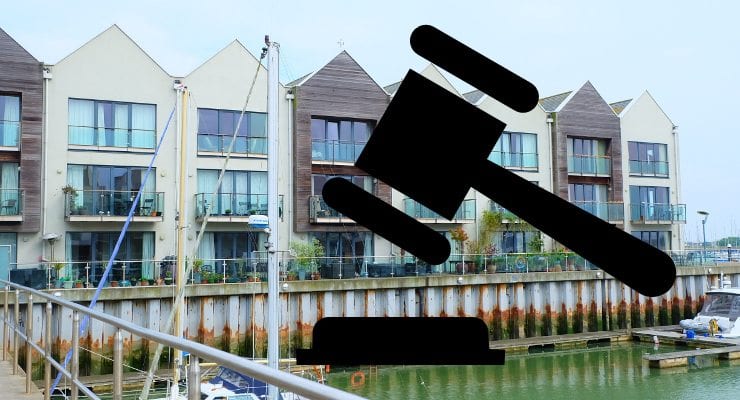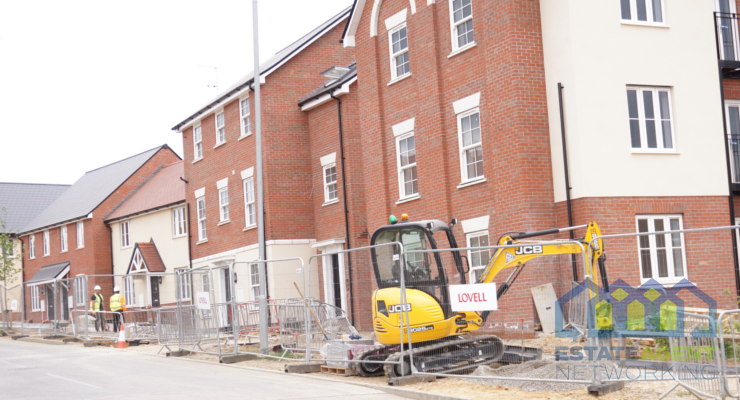Buyer demand drops in Q3, but Glasgow remains the hottest homebuyer spot in the UK
The latest and third buyer demand index of the year from Springbok Properties shows that UK homebuyer demand is currently at 39.5% having dropped -2.8% since Q2 as Brexit uncertainty continues to cloud the market.
Using data from the major property portals, Springbok looked at where has seen the largest levels of buyer demand across the UK’s 100 most populated towns and cities, based on the total ratio of the stock listed for sale and that which has already gone under offer or sold subject to contract.
Top 100 Towns and Cities
Aberdeen (8.7%), Stockton-on-Tees (22%) and Derry (23.8%) are amongst some of the lowest areas for buyer demand across the UK in Q3, while Derry has also seen the largest drop quarter to quarter, down -10.7%, followed by Belfast (-4.5%) and West Bromwich (-4.5%). London falls just within the top coldest spots at number ten, with current buyer demand at 29.5%.
But it’s not all doom and gloom for the UK property market and there are plenty of pockets where the appetite of homebuyers remains strong.
Glasgow remains the hottest spot in the UK for property demand in Q3 at 59.5%, with another Scottish one, two as Falkirk ranks second at 59.2%.
Sale is currently the hottest spot in England with buyer demand at 57.9%, followed by Bristol (57.4%), Worthing (55.3%) and Sheffield (54.6%). While it has slipped from the second spot last quarter with one of the largest quarterly declines in demand, Edinburgh still ranks seventh with current demand at 53.2%, followed by Dartford (51.7%), Stockport (51.2%) and Dudley (50.8%).
Basildon in Essex has seen the biggest increase since Q2, up +4.7%, along with High Wycombe (+4.5%) and Bradford (+3.5%)
London
Despite the wider national slowdown, there’s a glimmer of good news for London home sellers as demand creeps up in Q3 to 29.5% from 29.2% previously.
Bexley (53.6%), Waltham Forest (51.3%) and Sutton (46.5%) rank as the hottest for demand in Q3, with Greenwich (+3.7%), Hounslow (+2.6%) and Hillingdon (+2.6%) seeing some of the largest quarterly uplifts in demand.
The City of London is the coldest spot for current buyer demand at 8.3% and has also seen the largest quarterly decline, down -7.4% since Q2.
Founder and CEO of Springbok Properties, Shepherd Ncube, commented:
“In the current political climate, it would seem that the further you move away from Westminster the more appetite there is amongst UK homebuyers and while demand continues to decline, on the whole, the aspiration for homeownership is alive and well in many areas of the UK.
Those areas that will feel a direct consequence as a result of our European departure, such as the City of London, prime central London, and Northern Ireland, are certainly the areas feeling the brunt of market uncertainty at present.
The likelihood is that come the fourth quarter of this year, we will see a further decline in demand levels as a mix of seasonality and a brace for impact cause many to wait until the dust has settled next year before looking to buy.”
|
Location
|
Current Demand
|
Quarterly Change
|
|
UK
|
39.5%
|
-2.8%
|
|
London
|
29.5%
|
0.3%
|
|
Top 100 Towns and Cities
|
||
|
Hottest Spots for Demand in Q3, 2019
|
||
|
Location
|
Current Demand
|
|
|
Glasgow
|
59.5%
|
|
|
Falkirk
|
59.2%
|
|
|
Sale
|
57.9%
|
|
|
Bristol
|
57.4%
|
|
|
Worthing
|
55.3%
|
|
|
Sheffield
|
54.6%
|
|
|
Edinburgh
|
53.2%
|
|
|
Dartford
|
51.7%
|
|
|
Stockport
|
51.2%
|
|
|
Dudley
|
50.8%
|
|
|
Biggest Increases in Demand Since Q2
|
||
|
Borough
|
Q-change
|
|
|
Basildon
|
4.7%
|
|
|
High Wycombe
|
4.5%
|
|
|
Bradford
|
3.5%
|
|
|
Liverpool
|
3.0%
|
|
|
Oldham
|
2.2%
|
|
|
Worthing
|
2.1%
|
|
|
Milton Keynes
|
2.1%
|
|
|
Southport
|
2.1%
|
|
|
Birkenhead
|
2.1%
|
|
|
Stockport
|
2.1%
|
|
|
Coldest Spots for Demand in Q3, 2019
|
||
|
Location
|
Current Demand
|
|
|
Aberdeen
|
8.7%
|
|
|
Stockton-on-Tees
|
22.0%
|
|
|
Londonderry
|
23.8%
|
|
|
Darlington
|
26.1%
|
|
|
Sunderland
|
27.4%
|
|
|
Middlesbrough
|
27.9%
|
|
|
Blackpool
|
27.9%
|
|
|
Carlisle
|
28.5%
|
|
|
Preston
|
29.0%
|
|
|
London
|
29.5%
|
|
|
Biggest Declines in Demand Since Q2
|
||
|
Borough
|
Q-change
|
|
|
Londonderry
|
-10.7%
|
|
|
Belfast
|
-4.5%
|
|
|
West Bromwich
|
-4.5%
|
|
|
Edinburgh
|
-4.4%
|
|
|
Nuneaton
|
-4.3%
|
|
|
Chester
|
-3.5%
|
|
|
Falkirk
|
-3.3%
|
|
|
Dundee
|
-3.2%
|
|
|
Tamworth
|
-3.1%
|
|
|
Basingstoke
|
-2.8%
|
|
|
London
|
||
|
Hottest Spots for Demand in Q3, 2019
|
||
|
Borough
|
Current Demand
|
|
|
Bexley
|
53.6%
|
|
|
Waltham Forest
|
51.3%
|
|
|
Sutton
|
46.5%
|
|
|
Havering
|
45.1%
|
|
|
Bromley
|
45.0%
|
|
|
Barking and Dagenham
|
44.4%
|
|
|
Lewisham
|
43.2%
|
|
|
Hillingdon
|
41.7%
|
|
|
Greenwich
|
41.4%
|
|
|
Haringey
|
40.6%
|
|
|
Biggest Increases in Demand Since Q2
|
||
|
Borough
|
Q-change
|
|
|
Greenwich
|
3.7%
|
|
|
Hounslow
|
2.6%
|
|
|
Hillingdon
|
2.6%
|
|
|
Kingston upon Thames
|
2.6%
|
|
|
Enfield
|
2.2%
|
|
|
Waltham Forest
|
1.9%
|
|
|
Richmond upon Thames
|
1.8%
|
|
|
Camden
|
1.6%
|
|
|
Sutton
|
1.6%
|
|
|
Redbridge
|
1.5%
|
|
|
Coldest Spots for Demand in Q3, 2019
|
||
|
Borough
|
Current Demand
|
|
|
City of London
|
8.3%
|
|
|
Westminster
|
12.0%
|
|
|
Kensington and Chelsea
|
13.9%
|
|
|
Tower Hamlets
|
17.9%
|
|
|
Camden
|
21.1%
|
|
|
Brent
|
22.0%
|
|
|
Hammersmith and Fulham
|
22.8%
|
|
|
Lambeth
|
25.6%
|
|
|
Ealing
|
25.8%
|
|
|
Wandsworth
|
25.8%
|
|
|
Biggest Declines in Demand Since Q2
|
||
|
Borough
|
Q-change
|
|
|
City of London
|
-7.4%
|
|
|
Lambeth
|
-3.0%
|
|
|
Islington
|
-2.1%
|
|
|
Ealing
|
-1.2%
|
|
|
Croydon
|
-0.9%
|
|
|
Barking and Dagenham
|
-0.8%
|
|
|
Hackney
|
-0.7%
|
|
|
Wandsworth
|
-0.7%
|
|
|
Merton
|
-0.6%
|
|
|
Tower Hamlets
|
-0.4%
|
|









